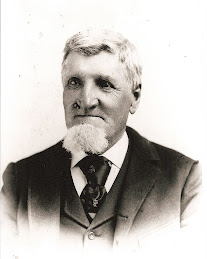Knowing of the economic and political dissatisfaction of the time period, it becomes clear why Robert’s unjust imprisonment in Stirling Castle would be an event sufficient for him to make the final decision to uproot his family and leave his homeland. Robert, along with two of his older children, William and Mary, traveled to America with the Hamilton Emigration Society. This was one of the many societies which assisted the people who are now referred to as the Lanark Society Settlers. During the years of 1820 and 1821, twenty-nine hundred people emigrated from this area of Scotland to Upper Canada with the assistance of the societies and the government.(2)
A circular published in Glasgow on 3 June 1820 stated that the government had agreed to assist a few hundred people from that area to emigrate to Upper Canada on the condition that they pay their own passage. This circular was published shortly before Robert would have been released from Stirling Castle. His wife, Margaret, would have been aware of this offer, and when he was released, she likely saw it as a way to remove her husband from the danger of being arrested again.
Those who were able to emigrate were required to provide the cost of their transportation from Greenock to Quebec and provisions of food for an eighty-four day passage. Upon arrival, the government would grant each family one hundred acres of land contingent upon residence and partial cultivation, pay for the surveying of that land, provide transportation from Quebec to the actual settlement area, provide seed and tools, and provide advances of money during the first six months of settlement.(3)
During the months of April and May 1821, four ships carried society members from Greenock to Quebec to receive government land grants in Upper Canada. The total number of individuals who emigrated was 1883. The third ship that year, the Commerce, carried 422 people. It sailed on 11 May and arrived on 20 June. Captain Coverdale reported the deaths of two children and one woman during passage, and no births.(4) This was the ship that Robert, William, and Mary sailed on.(5) The Gardners were among the relative few who were able to provide sufficient funds for three family members to emigrate in 1821 and begin establishing their family in America.
Upon arrival, Robert Gardner received his land grant of one hundred acres in the east half of lot six, concession five of Dalhousie, and his date of settlement was recorded as 15 July 1821.(6) The money he received on arrival appears to have been £6 13s. 4d. He also received £10 on 1 September 1821 and an additional £10 on 11 January 1822. His total debt to the government after the first six months in Canada was recorded as £26 13s. 4d., repayable in ten years.(7)
Below is a map of Robert Gardner's land grant in Dalhousie Township.

1. Smout, T. C. A History of the Scottish People, 1560-1830 (New York: Charles Scribner’s Sons, 1969), 401; Robert Lamond, Narrative of the Rise & Progress of Emigration, from the Counties of Lanark & Renfrew, to the New Settlements in Upper Canada (Glasgow: Chalmers & Collins, 1821), 6.
2. Lamond, Rise and Progress of Emigration, 5.
3. Lamond, Rise and Progress of Emigration, 20.
4. Lamond, Rise and Progress of Emigration, 63.
5. David Dobson, Directory of Scottish Settlers in North America, 1625-1825 (Baltimore: Genealogical Publishing Co., c1984-1993), 5:97.
6. Ontario Crown Lands Department, “Persons Located by the Military Settling Dept., Entitled to Patent Grants, Lanark (Vol. 104) 1822" in Land Records ca. 1792-1876 (Salt Lake City: Filmed by the Genealogical Society of Utah, 1982-1984), microfilm no. 1,319,967, item 5, p. 13, #379.
7. Ontario Crown Lands Department, “Account of Monies Advanced to Lanark Settlers” (Vol. 107) 1820-1822" in Land Records ca. 1792-1876 (Salt Lake City: Filmed by the Genealogical Society of Utah, 1982-1984), microfilm no. 1,319,967, item 9, Hamilton Emigration Society, Robert Gardner entry.





I just found your blog and I love it! Thank you for sharing your hours of research and work. Archibald and Margaret are my 4th great grandparents. I have been looking for a photo of Margaret. Do you know of one? I'm also looking for a faith-promoting story about their daughter Mary Ellen (my 3rd great-grandmother) and/or her husband Neil Livingston Gardner, Sr. I enjoyed finding Mary Ellen's obituary on your blog. If you know of where I could find these things, please send me a message at odcobian@yahoo.com
ReplyDeleteThank you again for this great blog!
Olivia Dahl Cobian
I am working on the Gardner Genealogy and am directly related to Archibald as my gr gr grandfather. Archibald is Robert's son. If Robert, his children William and Mary emmigrated in 1821, how did the rest of his family get to Canada? Archibald and Robert did end up in Utah
ReplyDeleteYes they did! I wrote another blog post titled, "Margaret's Emigration to Canada" in February 2010. That is where I told the rest of the story. Let me know if you have more questions. Nice to hear from you.
ReplyDelete